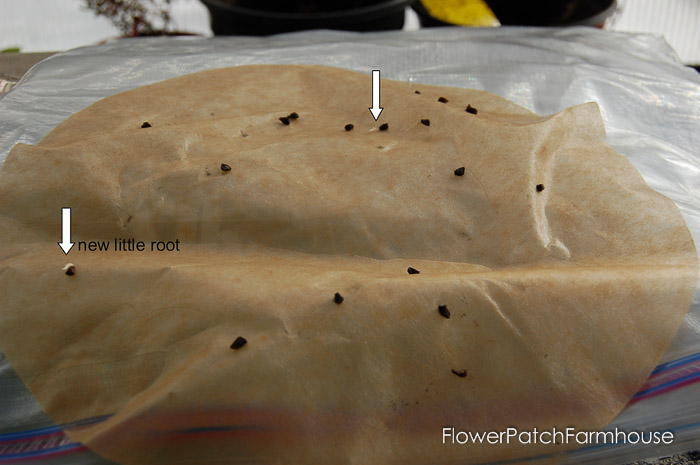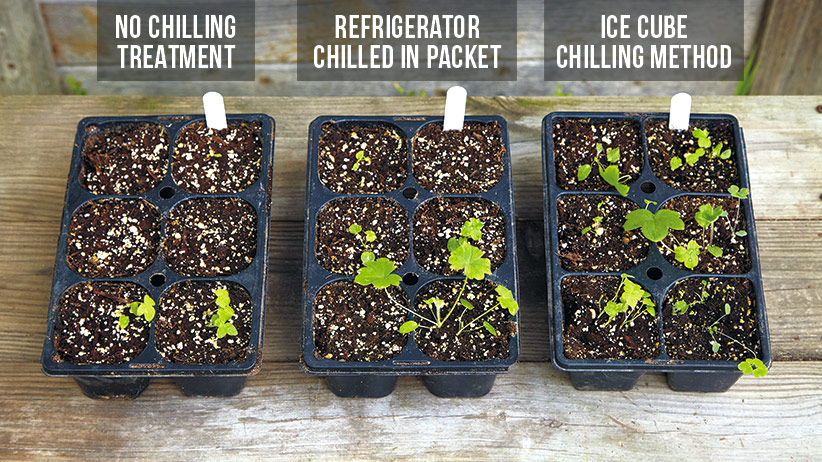To germinate Delphinium seeds, follow these steps: prepare a seed tray with well-drained soil, sow the seeds on the surface, lightly cover the seeds with soil, and keep them moist in a warm location. Germinating Delphinium seeds is a simple process that can be done at home with minimal effort.
Delphiniums, also known as larkspurs, are beautiful flowering plants that can add vibrant colors to any garden or landscape. By following these guidelines, you can successfully grow Delphiniums from seeds and enjoy their stunning blooms throughout the growing season. So let’s dive into the details and explore the right approach to germinate Delphinium seeds.

Credit: www.flowerpatchfarmhouse.com
How to Germinate Delphinium Seeds: Step by Step Guide
Choosing And Preparing The Seeds
To ensure successful germination of delphinium seeds, it is crucial to select the right seeds and prepare them properly. Start by choosing fresh and high-quality seeds from a reputable supplier or collect them from healthy delphinium plants in your garden. Look for seeds that are plump and without any signs of damage or mold.
After selecting the seeds, it is important to prepare them for optimal germination conditions. First, soak the seeds in water for 24 hours. This process, known as stratification, helps to soften the seed coat and promote germination. After soaking, allow the seeds to dry briefly on a paper towel.
Next, fill seed trays or pots with a well-draining seed starting mix. Moisten the soil and gently press the delphinium seeds onto the surface, ensuring they are in contact with the soil. Cover the seeds with a thin layer of vermiculite or fine sand to provide support and keep them in place.
Place the trays or pots in a warm and well-lit area, preferably near a south-facing window. Maintain consistent moisture by misting the soil regularly. Germination usually takes around 2-4 weeks, but some varieties may take longer. Once the seedlings have developed a few true leaves, they can be transplanted into individual containers or directly into the garden.
Creating The Ideal Germination Environment
Germinating Delphinium seeds requires creating the ideal environment. Temperature, moisture, and light conditions play crucial roles in the germination process.
Temperature: Delphinium seeds need to be exposed to a consistent temperature between 60°F and 70°F (15.5°C and 21°C) for successful germination. Avoid extreme temperature fluctuations as it can hinder the process.
Moisture: Delphinium seeds thrive in moist soil. Ensure that the soil is evenly damp but not soggy. Overwatering can lead to the seeds rotting. Mist the soil with water regularly to maintain the right moisture level.
Light: Delphinium seeds require light to germinate. Exposure to indirect sunlight or fluorescent light is sufficient. Avoid placing the seeds in direct sunlight as it can be too intense and inhibit germination.
By providing the optimal temperature, moisture, and light conditions, you can successfully germinate Delphinium seeds and enjoy beautiful blooms.
Germination Techniques For Delphinium Seeds
Learn effective techniques for germinating Delphinium seeds and ensure successful growth. Discover the step-by-step process to optimize your germination success rate.
Germination Techniques for Delphinium Seedsmoisture absorption, soaking the Delphinium seeds is an effective method. Place the seeds in a container with warm water24 hours. This will help soften the seed coat and enhance the germination process.
Another technique is stratifying the seeds to simulate natural winter conditions. Place the seeds in a moist paper towelpeat moss and seal them in a plastic bag. Store the bag in the refrigerator4 to 6 weeks. This cold treatment mimics the winter season and prepares the seeds for germination.
For faster germination, tissue culture propagation can be utilized. In this method, a small piece of tissue from the mother plant is placed on a nutrient-rich medium. This encourages rapid growth and multiplication of cells, resulting in faster germination rates for Delphinium seeds.
By employing these germination techniques, gardeners can ensure successful growth and beautiful blooms from Delphinium seeds.
Monitoring And Caring For Germinating Seeds
Monitoring and caring for germinating seeds is an essential part of successfully growing delphinium plants. Tracking the progress of germination is crucial to ensure optimal conditions for seed development.
Maintaining proper moisture levels is key. Overwatering can lead to rot and fungal diseases, so it’s important to strike a balance. Regularly check the soil moisture by inserting your finger into the soil up to the first knuckle; if it feels dry, it’s time to water.
Pests and diseases can also pose a threat to germinating seeds. To protect the seeds, use organic pest control methods such as companion planting or natural repellents to discourage pests from feeding on the young plants. Regularly inspect the plants for any signs of damage, and remove any affected leaves or stems to prevent the spread of diseases.
Transplanting Germinated Delphinium Seedlings
Growing Delphiniums from seeds is an exciting and rewarding endeavor. Once you have successfully germinated your Delphinium seeds, it’s time to transplant them to their permanent location. Before transplantation, take care to prepare the soil properly. Delphiniums prefer well-drained soil with a neutral pH level. Incorporating compost or organic matter into the soil will enhance its fertility and drainage, providing the ideal growing conditions for your young seedlings.
When transferring the seedlings, make sure to handle them gently, holding them by the leaves rather than the delicate stem. Transplanting the seedlings to larger containers initially allows them to establish a robust root system before being transplanted to the garden beds. Choose containers with proper drainage to avoid waterlogging, which can stress the young plants.
As Delphiniums are tall and graceful plants, they require adequate support to prevent them from toppling over in strong winds or heavy rain. Use bamboo stakes or plant supports to provide stability and prevent breakage. Tie the seedlings to the supports using soft twine, allowing them room to grow vertically while remaining securely upright.
Troubleshooting Common Germination Issues
Germinating Delphinium seeds can be a rewarding process, but it can also come with its fair share of challenges. If you find yourself facing germination issues, don’t worry – there are solutions available. One common problem is slow germination, where the seeds take longer than usual to sprout. In this case, providing a warm and moist environment can help accelerate the process. Another problem gardeners may encounter is failed germination, where the seeds simply do not sprout at all.
This can be caused by various factors such as improper seed storage, low-quality seeds, or incorrect planting depths. By addressing these issues, you can increase your chances of successful germination. It is also crucial to provide proper care and maintenance, including regular watering, sufficient light, and adequate nutrition. By being proactive and taking the necessary steps to address germination problems, you can ensure a bountiful crop of beautiful Delphinium flowers.
Frequently Asked Questions Of How To Germinate Delphinium Seeds
Do You Soak Delphinium Seeds Before Planting?
Soak delphinium seeds before planting to improve germination. Bathing them in water for 24 hours prior to planting softens the seed coat, aiding in moisture absorption. This quick and easy preparation step can increase the chances of successful seed propagation.
Is It Easy To Grow Delphinium From Seed?
Yes, growing delphinium from seed is easy.
How Long Does It Take For Delphinium Seeds To Germinate?
Delphinium seeds typically take around 10 to 20 days to germinate.
How Do You Start Delphinium From Seed?
To start delphinium from seed, sow the seeds in early spring in a well-draining soil mix. Lightly cover the seeds and keep them moist. Place the seed tray in a warm location with indirect sunlight. Once the seedlings have 2-3 sets of true leaves, transplant them into individual pots.
Provide the plants with adequate sunlight and water until they are ready to be planted outdoors.
Conclusion
Germinating delphinium seeds can be a rewarding and enjoyable endeavor. By following the steps outlined in this guide, you can ensure the successful growth and establishment of your delphinium plants. Remember to provide the ideal conditions of moisture, temperature, and light throughout the germination process.
With patience and care, you’ll soon be rewarded with beautiful and vibrant delphinium blooms in your garden. Happy gardening! (48 words)

